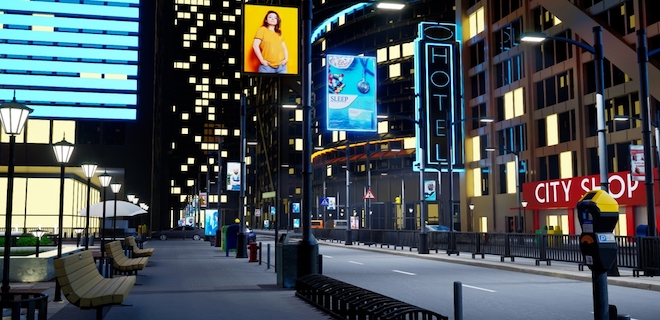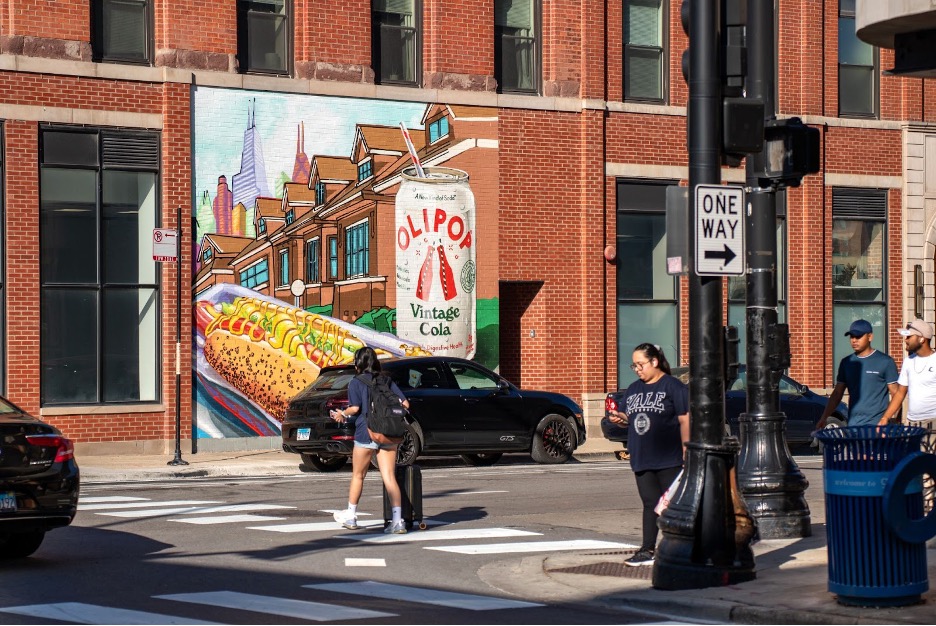
The digital out-of-home space is starting to hit its stride, and publishers and advertisers are beginning to understand its true benefits for attention, measurement, and much more.
After a long career working with the largest media holding companies, Brian Rappaport launched his own business focusing on out-of-home (OHH) and digital out-of-home (DOOH) advertising. He founded Quan Media Group in 2019 and has since amassed over 100 clients, primarily through referrals. While Quan Media Group offers media plans, audience profiling, programmatic ad targeting, and measurement reports, Rappaport rejects the “agency” label. He prefers “out-of-home concierge,” which emphasizes the flexibility and speed required in this fast-changing channel.
Working with a wide range of clients, including FreshDirect, the NYC-based grocery delivery service, Olipop, Ro, PrizePicks, SKIMS, and others, Quan Media Group has picked up a wealth of insights into what makes for a successful out-of-home campaign, which he shared with AdMonsters.
Susie Stulz: What makes now a good time for brands to consider out-of-home (OOH), and particularly digital out-of-home (OOH)?
MR: The channel is hitting its stride right now, and brands are beginning to understand that it offers vast opportunities beyond billboards, subway signs, and wild postings (advertisements placed on surfaces not typically designated for commercial purposes, otherwise known as guerrilla advertising.)
Out-of-home advertising is a broad range of tactics, from advertising in airports and hand-painted murals to street-level out-of-home transit and even mobile pop-up shops where a brand’s clients hang out.
SS: How long does it take to go live with an OOH or DOOH campaign?
BR: There’s a misconception that there is a long wait time. In reality, campaigns can go live in a matter of days. It’s possible to go live with printed out-of-home ten days after approving creative. Digital out-of-home can go live within an hour. It has become a much more nimble channel than many realize.
SS: What are some of the targeting options with OOH? 
BR: Targeting in this channel is different from other digital channels. It’s more about working with brands to understand their core consumers and ideal demographics and then developing a persona.
Then, using audience, psychographic and analytical tools to understand where we can find those people within a given market, locating the physical locations where they live, work, and play.
SS: How do you pinpoint where people live, work, and play?
BR: We do that through anonymous mobile location data, which allows us to glean things like travel patterns. This is exciting because it enables brands to pinpoint the exact neighborhood and other locations where they can find their ideal audience.
This isn’t exclusive to Quan Media Group; every OOH firm can provide market insights and audience mapping to a degree. The entire industry has advanced to where we can tap into vast datasets that map consumer demographic and psychographic behaviors.
For instance, we partner with Placer.ai, and they can tell us how people travel to specific locations, say a casino in Las Vegas. Placer.ai can tell us where people fly in from, roadways traveled, and so on, all based on anonymous mobile data. We can use this insight to pinpoint where to find other potential customers. This is also a great strategy for brick-and-mortar retail outlets.
SS: Is it possible to use that data to understand the composition of each audience by out-of-home units? For instance, which units are best for attracting Gen Z vs. Millennial moms?
BR: Yes it’s possible, and it’s something all DOOH firms do all the time. Geopath is out-of-home’s measurement and auditing bureau; it looks at every piece of OOH advertising available and can provide metrics important to marketers, such as impressions delivered, market reach frequency, percentage of male versus female, age breakdown, etc. This is standard for out-of-home now.
SS: I can see how one can estimate the potential target. If you have signs near playgrounds, you can assume you’re reaching moms or nannies. But how do you measure business outcomes to OOH advertising?
BR: That’s a great question. Measurement and out-of-home haven’t gone hand-in-hand over the past few years, but what’s changing is our ability to separate the upper funnel from the lower funnel now. We can measure key upper funnel metrics, such as brand awareness, recall, lift, and other KPIs, via custom mobile surveys and compare exposed and unexposed groups.
We can measure footfall, web, and app lift on the lower funnel side and then directly attribute those actions to a campaign. From an online standpoint, we can utilize website pixels to measure various conversion events. We can understand who walked by a placement, visited a website, and made a purchase after seeing that ad.
SS: What are some of the more interesting placements that are now available to brands?
BR: I’m really bullish on airports. If you look at the TSA stats, air travel is back, and airports are full. But it’s not really on a brand’s radar. When they want to be in a top 10 DMA, say New York City, they want big ad placements in SoHo or Penn Station. But airports are an untapped opportunity.
Not every airport is exciting, but some offer great opportunities, especially the newer terminals. Out-of-home opportunities have evolved to match these sleek facilities, offering digitized, full-motion, and gorgeous signage.
And there are also really interesting placements that are unique to each city. Boston, for instance, has beautiful new digitized city information panels and cylindrical pillars throughout the downtown corridor. There are so many ways to buy OOH there without investing in a single billboard.
SS: In your opinion, which types of brands are doing OOH right?
BR: Many brands are doing great jobs, some emerging and some legacy.
One of the brands doing a fantastic job is Ollipop. They’re not a legacy OOH brand but are establishing themselves regarding the channel. They’ve methodically gone from market to market, partnering with key retailers and influencers and taking the time to ensure they’re fully versed in each location. They’ve leaned into market-endemic tactics when choosing their placements. For instance, they’ve wrapped light rail trains that pull into Orioles games in Baltimore. They look for opportunities near key retailers, like Whole Foods.
Royal Caribbean is another great legacy OOH brand. Their creatives are visually stunning.
The NBA has done a fantastic job tapping into programmatic digital out-of-home, especially around playoff time. They target cities whose teams are in the playoffs, running contextual messaging.
SS: When you talk about city-endemic tactics and unique opportunities by city, it sounds as if working with an out-of-home expert is a smart move.
BR: The biggest thing a brand or marketer can do wrong is to test or run out-of-home alone, especially for the first time. To succeed, one needs to work with a true OOH specialist who can use data to hone in on the exact audience and understand the unique opportunities.
